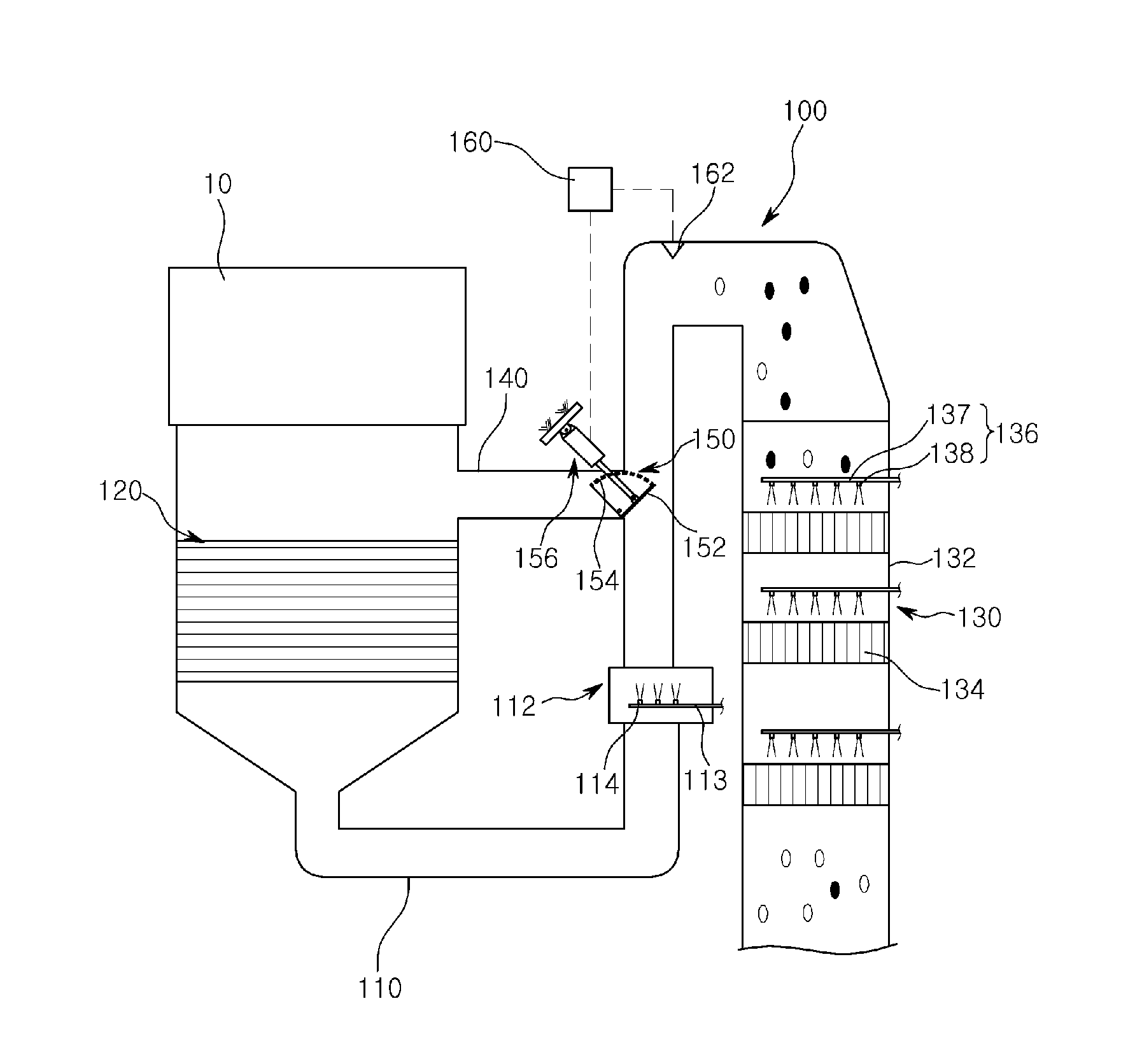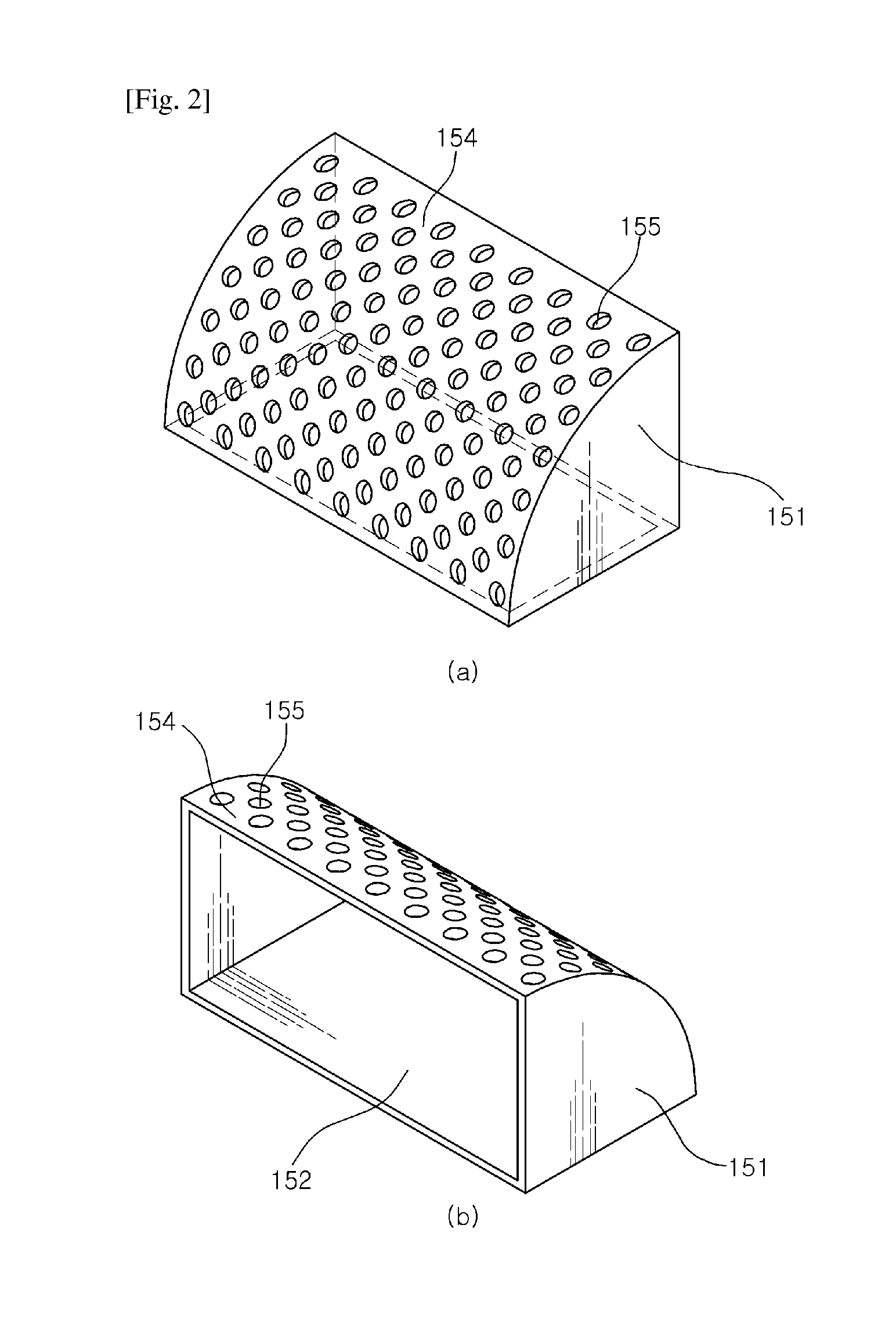Exhaust gas treatment apparatus
a technology of exhaust gas treatment and exhaust gas, which is applied in the direction of emission prevention, separation processes, instruments, etc., can solve the problems of difficult to maintain the active temperature range of the catalyst in the catalyst, the actual operating temperature of the coal-burning boiler is lower than the design temperature, and the ammonium sulfate may clog the exhaust gas passage, so as to improve the efficiency and lifespan of the denitrification catalyst, reduce the emission of nitrogen oxides, and improve the efficiency of the deni
- Summary
- Abstract
- Description
- Claims
- Application Information
AI Technical Summary
Benefits of technology
Problems solved by technology
Method used
Image
Examples
Embodiment Construction
[0044]Exemplary embodiments of the present invention will now be described in detail with reference to the accompanying drawings. The present invention may, however, be embodied in many different forms and should not be construed as being limited to the embodiments set forth herein. In the drawings, the sizes and shapes of elements may be exaggerated for clarity, and like reference numerals denote like elements.
[0045]FIG. 1 is a schematic view illustrating an exhaust gas treatment apparatus 100 according to an embodiment of the invention, and FIG. 2 is a partial perspective view illustrating a variable exhaust regulator 150 of the exhaust gas treatment apparatus 100 according to the embodiment of the invention. FIG. 3 is a view for explaining how the variable exhaust regulator 150 is operated in the exhaust gas treatment apparatus 100 according to the embodiment of the invention.
[0046]Referring to FIGS. 1 to 3, according to the embodiment of the invention, the exhaust gas treatment ...
PUM
 Login to View More
Login to View More Abstract
Description
Claims
Application Information
 Login to View More
Login to View More - R&D
- Intellectual Property
- Life Sciences
- Materials
- Tech Scout
- Unparalleled Data Quality
- Higher Quality Content
- 60% Fewer Hallucinations
Browse by: Latest US Patents, China's latest patents, Technical Efficacy Thesaurus, Application Domain, Technology Topic, Popular Technical Reports.
© 2025 PatSnap. All rights reserved.Legal|Privacy policy|Modern Slavery Act Transparency Statement|Sitemap|About US| Contact US: help@patsnap.com



